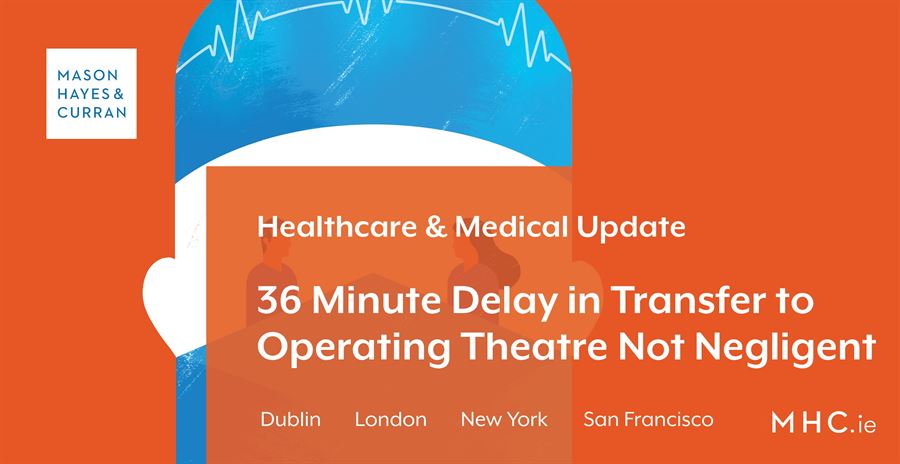
The recent High Court case of Clifford v Health Service Executive[1] saw Ms Clifford suing a regional hospital for negligence regarding the treatment provided to her following her daughter’s birth in May 2012.
Background
Ms Clifford sued due to losing approximately 1.5 litres of blood following the birth of her baby. She claimed that the HSE and Kerry General Hospital failed in their duty to take sufficiently timely steps to stop her haemorrhage and that she was traumatised by these events.
It was alleged that there had been a 36 minute delay in moving Ms Clifford to the operating theatre. It was claimed that had she been moved earlier the blood loss would have been reduced and the trauma suffered would likely have been less also.
Mr Justice Cross accepted Ms Clifford as a completely genuine witness and accepted that her life had been significantly damaged by the events following her daughter’s birth. However, the real questions arising were (1) liability, and (2) causation.
High Court findings on liability
![]() When a medical negligence claim is made, it must be established on the balance of probability that the medical practitioners were guilty of such a failure that no practitioners of equal status or skill would be guilty of if acting with ordinary care. This standard is set out in Dunne v National Maternity Hospital[2] (the Dunne Principles).
When a medical negligence claim is made, it must be established on the balance of probability that the medical practitioners were guilty of such a failure that no practitioners of equal status or skill would be guilty of if acting with ordinary care. This standard is set out in Dunne v National Maternity Hospital[2] (the Dunne Principles).
The judge accepted the evidence of the HSE’s expert witness that the hospital had followed the approved practice of a regional hospital at the time. The expert witness indicated that all reasonable steps were undertaken and that while in a major maternity hospital the transfer might have happened faster, no real criticism could be levelled against the regional hospital.
The judge, on examining the evidence, found that the third limb of the Dunne Principles had not been demonstrated. The third limb sets out that following a general practice approved by colleagues of similar specialisation and skill would not evade liability if ‘such practice has inherent defects which ought to have been obvious to any person giving the matter due consideration’. The judge accepted that the hospital might have acted more rapidly, but in preferring the HSE’s expert evidence, he could not conclude that the hospital had been negligent.
Causation - speculation
Having found that no liability arose, causation did not need to be considered. Mr Justice Cross did however note that while Ms Clifford would likely have still lost a significant amount of blood, he believed that had the transfer occurred sooner she would have suffered less of a blood loss and probably less psychiatric trauma. However, he considered that this was ultimately unnecessary speculation.
Conclusion
The Clifford case serves as an important reminder that the Dunne Principles are still alive and well and remain key in establishing negligence in medical claims. Hospitals should not become complacent in following a general and approved practice. They should continue to keep their systems under review and ensure that they are in line with accepted practices for similarly sized and staffed hospitals with similar levels of specialisation.
For more information relating to the defence of medical negligence claims, contact a member of our Healthcare and Medical Law team.




